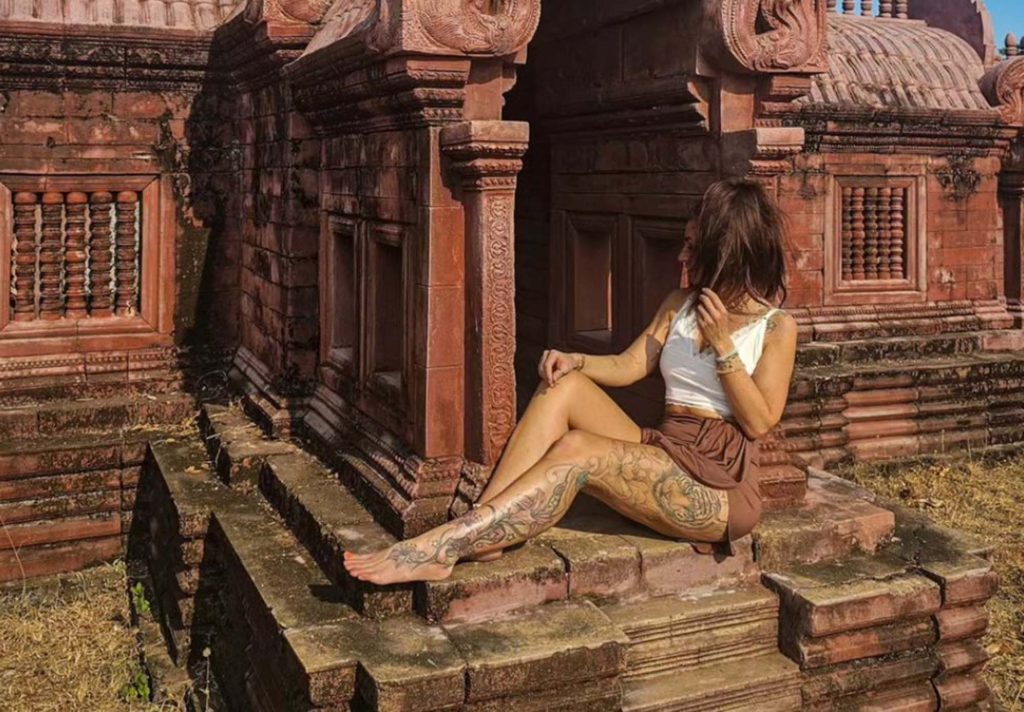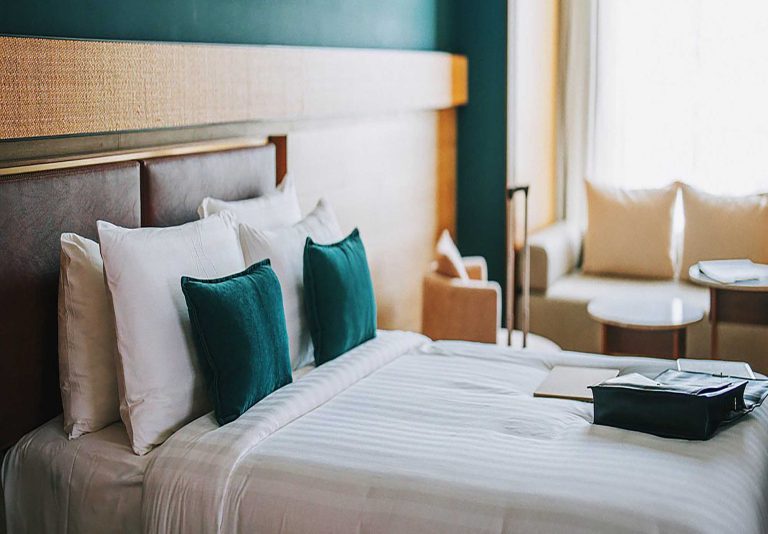In the heart of Bangkok, where the Chao Phraya River gently weaves its tale through the city’s bustling landscape, two historical wonders beckon the curious traveler. Wat Pho, a sanctuary of spiritual serenity along the riverbanks, and the Grand Palace, a dazzling display of regal opulence, stand as guardians of Thailand’s rich heritage. As a time traveler navigating through the ancient wonders of Bangkok, the journey begins with a step into the sacred grounds of Wat Pho, where tales of ancient legends and profound spirituality are etched into every intricately carved stone. Join me on this expedition through time as we unravel the historical tapestry woven by these architectural marvels, each revealing a chapter of Thailand’s captivating past.
Nestled Along the Banks of the Chao Phraya River: The Serenity of Wat Pho
Embracing the Spiritual Haven:
As I approached the hallowed grounds of Wat Pho, a sense of anticipation and reverence washed over me. Situated along the meandering banks of the Chao Phraya River, this temple complex stood as a bastion of Thailand’s spiritual heritage, a refuge from the city’s energetic hum. The Chao Phraya River, with its gentle currents, mirrored the tranquility that enveloped the temple, creating a harmonious coexistence of nature and spirituality.
The Temple’s Artistic Tapestry:
Wat Pho, known colloquially as the Temple of the Reclining Buddha, unfolded its artistic tapestry before me as I stepped into its sacred precincts. The architectural marvels of the temple seamlessly merged with the natural beauty that enveloped it. Every inch of the structure was adorned with elaborate carvings, serving as a testament to the rich history embedded in its walls. These carvings weren’t mere decorations; they were intricate storytellers, narrating tales of ancient legends and profound religious teachings.
As I wandered through the temple’s intricate corridors, the hustle and bustle of the city gradually faded into the background. Instead, I found myself enveloped in a serene atmosphere, where the only sounds that reached my ears were the soft rustling of leaves and the occasional chime of temple bells. The aura of tranquility was palpable, inviting contemplation and reflection.
The details of the carvings on the temple walls seemed to come alive, each telling a story that added another layer to the cultural and spiritual heritage of Wat Pho. The vivid depictions of ancient legends and religious narratives transported me to a different time, offering a glimpse into the beliefs and traditions that have shaped the temple’s identity over centuries.
Wat Pho’s unique blend of architectural splendor and natural surroundings created an immersive experience, where the sacred and the earthly seamlessly intertwined. As I continued to explore, it became evident that this temple was not just a physical structure but a living testament to the enduring spirit of Thai culture and spirituality. The Reclining Buddha may be the centerpiece, but every carving, every inch of the temple, contributes to the captivating narrative that unfolds within its sacred walls.

The Reclining Buddha’s Silent Majesty:
As I made my way to the heart of Wat Pho, the Reclining Buddha, a colossal figure draped in gold leaf, came into view. The sheer size of the statue, spanning an impressive 46 meters, left me in awe. The Buddha’s serene expression and the exquisite mother-of-pearl inlay that adorned its feet added an ethereal quality to the atmosphere. The play of natural light on the golden surface created a celestial glow, making the entire experience feel like a sacred revelation.
Tranquility Amidst Urban Energy:
What struck me most profoundly was the temple’s ability to cocoon itself in tranquility despite being nestled in the vibrant heart of Bangkok. The urban energy that defines the city seemed to respectfully hush in the presence of Wat Pho, creating a sanctuary where the spiritual and the temporal coexisted in delicate harmony. The Chao Phraya River, gently lapping against the temple’s foundation, provided a soothing soundtrack that underscored the tranquility within.
Practical Details:
- Ticket Reservation: No reservation is required; visitors can purchase tickets on-site.
- Ticket Price: The entry fee is reasonably priced, making Wat Pho accessible to both locals and tourists.
- Operating Hours: Wat Pho graciously opens its doors from 8 AM to 6:30 PM, allowing visitors to immerse themselves in its spiritual embrace throughout the day.
Historical Echoes:
Wat Pho, with its roots dating back to the 16th century during the Ayutthaya period, stands as one of Bangkok’s most ancient temples. Its historical significance goes beyond mere architectural splendor; it has been a hub for education and traditional Thai medicine, embodying a holistic approach to spiritual and physical well-being.
The temple’s intricate murals and inscriptions on its walls serve as a visual narrative, telling tales of Thai folklore and Buddhist teachings. These artistic expressions beckon visitors to immerse themselves in the vibrant tapestry of Thailand’s cultural and spiritual legacy. Beyond being a place of worship, Wat Pho is a repository of the nation’s heritage.
Wat Pho’s significance transcends its physical structures; it is a living testament to the enduring spirit of Thai heritage. As the Chao Phraya River gracefully flows alongside this venerable temple, it carries with it the echoes of centuries past. These whispers tell stories of unwavering devotion and artistic brilliance that have left an indelible mark on Thailand’s cultural landscape.
In essence, Wat Pho is not merely a collection of stones and statues; it is a dynamic entity, resonating with the history and traditions of the Thai people. Its existence speaks to the continuous flow of time, connecting the present to a rich past. As visitors explore its grounds, they become part of a legacy that has shaped the nation, contributing to the ever-evolving narrative of Thailand’s cultural heritage.

The Grandeur Unveiled: Exploring the Richness of Thailand’s Grand Palace
Historical Background:
Since its construction in 1782, the Grand Palace has stood as an indomitable symbol of Thailand’s regal heritage, its majestic presence etched into the very fabric of the nation’s history. For over 150 years, it served as the esteemed official residence of the Thai monarch, witnessing the ebb and flow of time and the evolution of a nation.
The Grand Palace transcends its utilitarian role as a royal residence, becoming an embodiment of architectural brilliance that seamlessly fuses traditional Thai, European, and Chinese styles. Each facet of the palace reflects a meticulous dedication to preserving the grandeur of Thai royalty, offering a visual narrative that spans centuries.
As one wanders through the expansive complex, it becomes evident that the Grand Palace is not frozen in time; rather, it has gracefully adapted to the changing tides of history. Today, it stands as a living museum, a custodian of royal history and cultural significance. Every courtyard, corridor, and chamber whispers tales of bygone eras, preserving the legacy of monarchs and the cultural influences that have shaped Thailand.
The architectural brilliance of the Grand Palace lies in its ability to harmoniously blend diverse influences. Traditional Thai elements, with their intricate details and symbolic motifs, intertwine seamlessly with European and Chinese design features, creating a visual symphony that resonates with both local and international visitors.
The intricate carvings, gilded facades, and meticulously crafted structures within the Grand Palace reflect not just the opulence of royalty but also the craftsmanship and artistic prowess of the artisans who brought this masterpiece to life. Every nook and cranny holds a story, and every architectural detail is a brushstroke on the canvas of Thailand’s regal history.
As the Grand Palace continues to stand with unwavering grace, it invites visitors to delve into the rich tapestry of the nation’s past. It is not merely a relic of bygone times but a dynamic entity that breathes life into the historical narrative, allowing each generation to connect with the profound legacy of Thai royalty. In its enduring elegance, the Grand Palace remains a beacon of cultural continuity, honoring the past while standing as a testament to the resilience of Thailand’s regal spirit.

Entrance into Majesty:
Stepping through the intricately adorned gates, the Grand Palace unfolds as a mesmerizing tapestry of Thai history. The complex is a dazzling array of opulent buildings, each narrating a unique chapter in the nation’s story. The centerpiece, the Emerald Buddha Temple, houses the revered Emerald Buddha. This sacred sanctuary is a visual spectacle, with the Buddha draped in gold and adorned with precious jewels.
Architectural Marvels:
The structures within the Grand Palace boast gilded facades and vibrant murals, creating an ethereal atmosphere that captivates the senses. Every detail, from the intricate carvings to the meticulous craftsmanship, reflects the dedication to preserving the grandeur of Thai royalty. The palace’s design mirrors a harmonious fusion of cultural influences, making it a symbol of national pride.
Practical Guide to Grandeur:
For those eager to explore this architectural jewel, advance ticket reservations are highly recommended, especially during peak tourist seasons. Online reservations ensure a seamless experience, granting access not only to the Grand Palace but also to the Emerald Buddha Temple. Ticket prices may vary based on guided tours and special exhibitions. Operating hours, from 8:30 AM to 3:30 PM daily, allow visitors ample time to immerse themselves in the regal splendor of the Grand Palace.
Immersive Experience:
Beyond its physical grandeur, the Grand Palace offers visitors an immersive journey into the heart of Thai history and culture. Every step within the complex unveils a new layer of richness, creating an experience that goes beyond sightseeing, transcending into a profound appreciation for the nation’s royal heritage. As the sun sets over this architectural marvel, it leaves an indelible impression, echoing the grandeur that has defined Thailand’s royal legacy for centuries.











+ There are no comments
Add yours